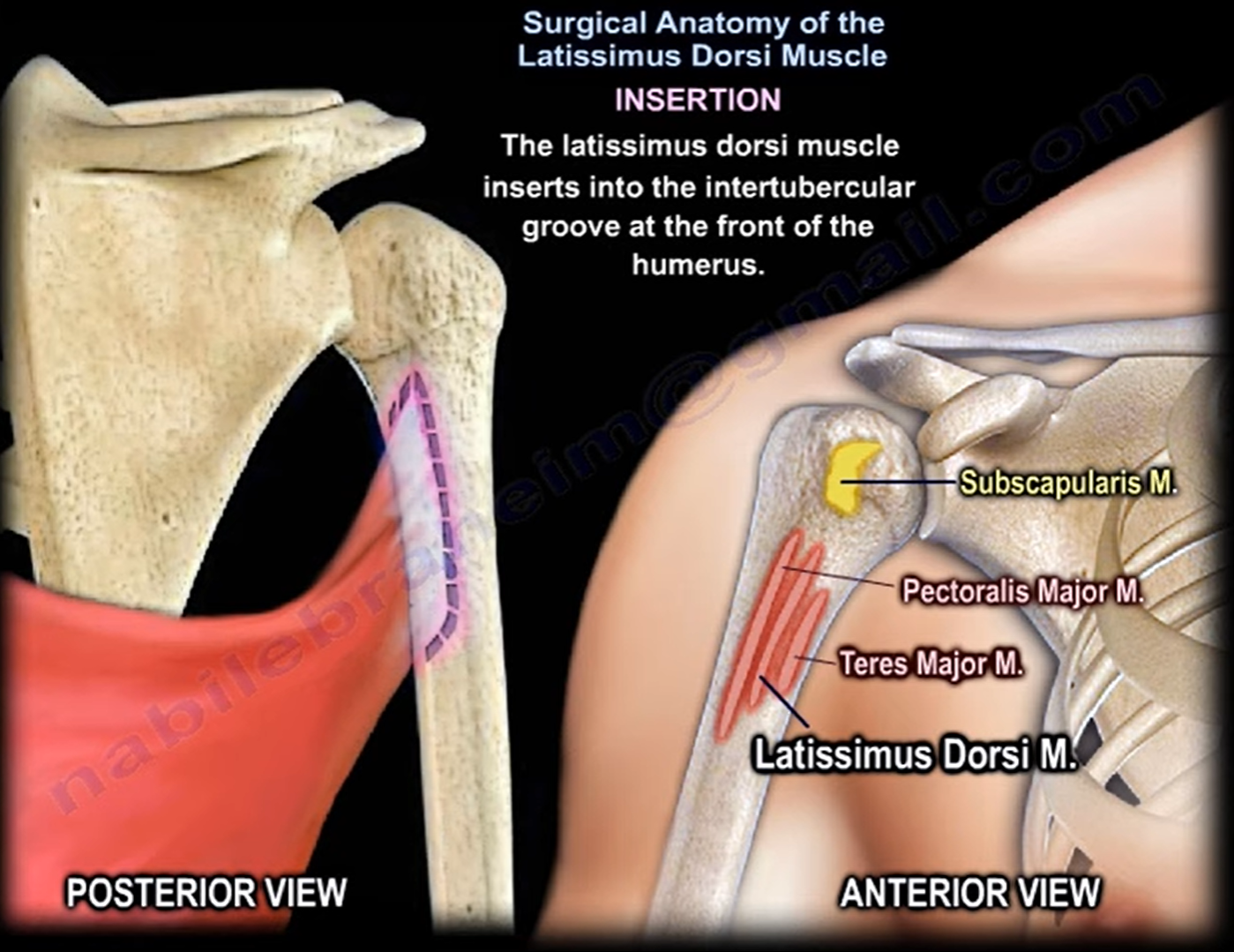Courtesy: Prof Nabil Ebraheim, University of Toledo, Ohio, USA
SURGICAL ANATOMY OF LATISSIMUS
- Broadest muscle of back which is covered by Trapezius
Origin: from iliac crest, thoracolumbar fascia, inferior processes of the inferior six thoracic vertebrae and inferior three or four ribs.
Insertion: Inserts into the intertubercular
groove at the front of humerus, between two majors: Teres major and Pectoralis major muscles.
Function: Responsible for adduction, medial rotation and extension of the shoulder.
Also raises the body towards the arm during climbing.
Innervation: Supplied by the cervical nerve roots of C6, C7 and C8 through the thoracodorsal nerve.
Blood supply: Thoracodorsal artery
USES:
It is used as a free flap, especially in open fractures in the distal third of the tibia.
The latissimus dorsi can also be used as a tendon transfer in the treatment of massive, irreparable rotator cuff tears in the young and adult patients.
LATISSIMUS DORSI RUPTURE:
The tear of the latissimus dorsi is caused by eccentric overload during follow through of the throwing motion.
Diagnosis: Pain over the latissimus dorsi which is worse with shoulder adduction and internal rotation.
Clinical diagnosis confirmed by MRI.
Treatment: Surgery can be done in competitive athletes with a complete tear and repair is done early.
If surgery is delayed, the procedure may be difficult due to retraction, scarring and fibrosis of the muscle.

Leave a Reply